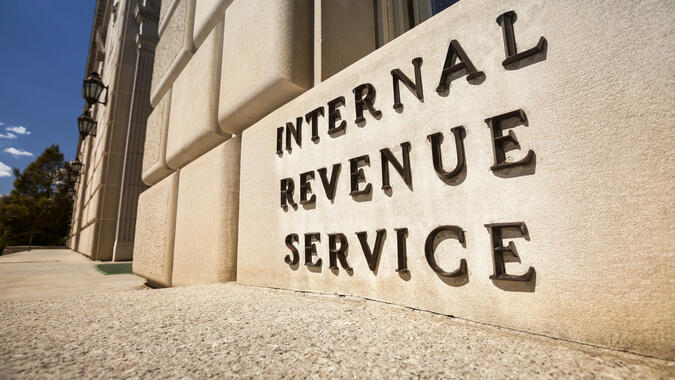Trends & Developments - June 2015 - Ever-Increasing Duties for Plan Sponsors
- Published
- Jun 16, 2015
- Share
There is little doubt that the fiduciaries of employee benefit plans – whether employer or sponsor or investment advisor – are under closer scrutiny than ever before. As a result, the "duties" that are imposed on those fiduciaries are increasing. Two recent additions to the list of duties have emerged from guidance issued by a regulator (Internal Revenue Service) and from a judicial decision (by the U.S. Supreme Court).
Background
ERISA applies to a wide array of employee benefit plans, from multi-employer pension plans to individual account plans. The plan sponsors – including those who have any discretionary authority or responsibility for the administration of the plan – are subject to so-called fiduciary duties.
Under the law, plan fiduciaries must act "with the care, skill, prudence and diligence" that a prudent person would use. A plan fiduciary that breaches this duty of prudence may be held liable to the plan for any resulting losses. In addition, ERISA also requires fiduciaries to follow specific duties, such as the duty to follow plan documents.
A Continuous Duty: To Monitor Plan Investments
In a recent unanimous opinion, the U.S. Supreme Court held that plan fiduciaries must regularly monitor plan investments. In addition, the High Court held that plan fiduciaries have a continuing duty to remove imprudent investments.
The case before the Court involved a suit against the fiduciaries of the 401(k) plan sponsored by Edison International. The action sought to recover damages based on the decision to add "retail" mutual fund options to the plan's line-up of investment choices. Lower courts had noted that the action was filed after the expiration of the six-year statute of limitations period.
Instead, the U.S. Supreme Court in Tibble v. Edison emphasized that a plan fiduciary has a continuing duty to monitor investments and remove imprudent ones that is "separate and apart" from their duty to exercise prudence in selecting investments. Notably, the Court did not provide any guidance on the factors underlying the continuing duty by fiduciaries to "systematically consider all the investments … at regular intervals to ensure that they are appropriate."
Certainly, fiduciaries must continue to make certain that the investments (and the investment choices) within the plan are regularly monitored. Just as importantly, all decisions on plan investments – selection, monitoring, retention and removal – must be well documented.
Whose Duty Is It: Tracking Hardship Distributions
A recent news bulletin from the IRS serves as a cautionary reminder that plan sponsors are ultimately responsible for the proper administration of their retirement plan, even if they rely upon a third-party administrator.
In a recent "Employee Plan News," the IRS emphasized that the proper administration of a retirement plan includes recordkeeping requirements. As a result, plan sponsors must be able to provide the Service with the documentation necessary to substantiate an employee's "immediate and heavy financial need" for a hardship withdrawal in the event of an IRS audit.
Hardship withdrawals from a qualified plan can be made available to employees based on an immediate and heavy financial need that cannot be met from other sources. But there is no formal guidance on exactly what proof an employee must provide to the plan sponsor to demonstrate eligibility for a hardship withdrawal.
Under the regulations, hardship distributions cannot exceed the so-called maximum distributable amount, based on the employee's total elective contributions – less any previous distributions – on the distribution date. In addition, the IRS issued guidance in 2007 permitting hardship distributions on behalf of a "primary beneficiary" of the plan as well as for the plan participant. In those situations, hardship distributions can be made for medical tuition and funeral expenses.
In practice, many plans rely on third-party administrators to manage the entire hardship withdrawal process. These systems are often electronic, typically requiring the employee to:
- provide information about their particular financial need (whether the expenses are intended to prevent eviction or foreclosure, or to pay for medical costs, tuition and education expenses or funeral outlays);
- certify that information provided is accurate; and
- retain back-up documentation as proof of financial need.
In its latest newsletter to employers, the IRS acknowledged that self-certification is an acceptable means of showing that a plan distribution was the sole way to alleviate the hardship. However, the Service also noted that the plan participant may leave his or her employment at a future date. In that situation, self-certification cannot be relied upon to show the nature of the hardship in the event of a plan audit in the future. As a result, the IRS is urging plan sponsors to retain their documentation and distribution records in paper or electronic format.
Going Forward
Plan sponsors cannot abdicate their fiduciary duties or their recordkeeping responsibilities. Even with blue-chip investment advisors and third-party administrators, you should monitor and review plan records frequently. You must also ensure your access to documentation and retain recordkeeping data.
Trends & Developments - June 2015
- Transfer Pricing: What Is It All About and Why Has It Become So Important for Multinational Enterprises?
- Ever-Increasing Duties for Plan Sponsors
- How Biotech Companies Can Manage the Pre-IPO Process
- Hoteliers, Investors and Managers Remain Cautiously Optimistic on State of Hospitality Industry
- Cybersecurity, Valuations, Succession: Operating in a Complex Environment
- Announcing EisnerAmper Global
- EisnerAmper Sweeps Alpha Awards
Contact EisnerAmper
If you have any questions, we'd like to hear from you.
Receive the latest business insights, analysis, and perspectives from EisnerAmper professionals.










